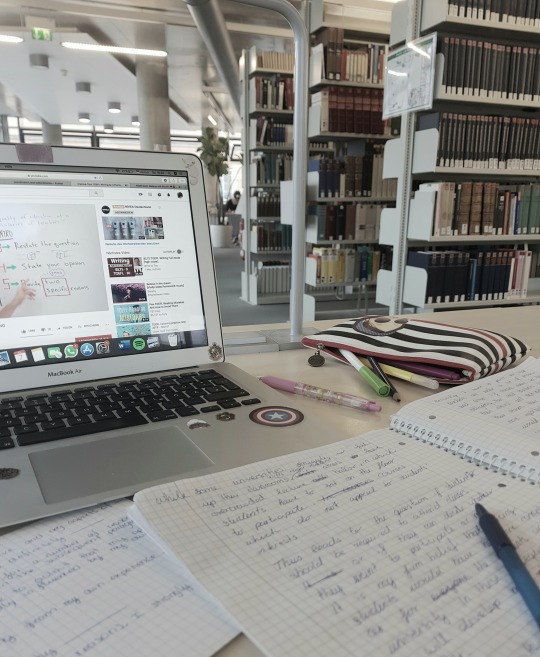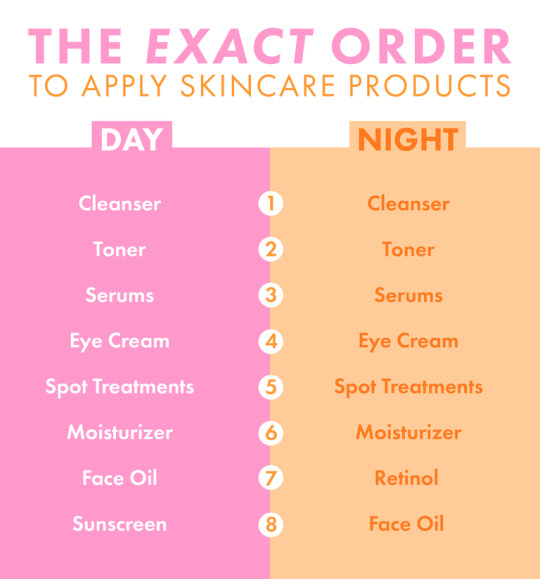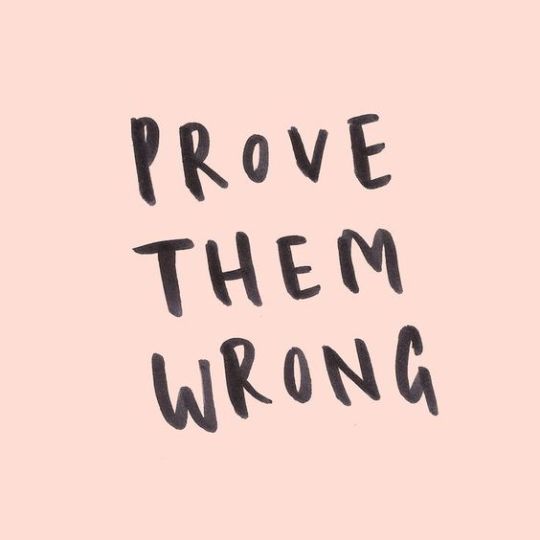19 | ARMY | Nursing student | Langblr | Skin-care | many other random thing
Don't wanna be here? Send us removal request.
Text

Clap if you feel academically inept!
2K notes
·
View notes
Text


The library is starting to become my 2nd home 📚💁🏻♀️ currently, I'm studying for the toefl exam and it's going pretty well 💕
3K notes
·
View notes
Text
Skin-care for Beginners

Since long back with the increasing amount of skin-care products, I’ve always wondered how I would start a regimen without having to consult to a dermatologist or waste money on a product that turns out to be incompatible with my skin despite reviews in YouTube. I was in my mid-teens then with interests of starting a new habit to benefit from, but my mom never allowed me to do such things as she believed that I was still young to do such skin-care (and also makeup). I wanted have a skin-care regimen to help and ease the irritations from my dry and dehydrated skin. Now that I’ve grown up, yeah, my mom finally allowed me to put light makeup and use some skin-care products.
This page will focus on various things related to skin-care based on my research (don’t worry, I’ll include the respective link), though it will mostly be for dehydrated and dry skin:
the types of skin
difference between “dehydrated” and “dry” skin
how to read labels
the generally “good” and “bad” ingredients to look out for in products
the order of using products
Types of skin:
There are about “5” different types of skin, namely:
Oily: due to an overproduction of sebum (an oily substance secreted by sebaceous glands in the skin; helps to keep the skin and hair moisturised).
Normal: a well-balanced skin; skin is neither too oily nor too dry.
Dry: less sebum production, leading to the skin having difficulties retaining moisture.
Combination: areas of the skin (particularly the “T” zone (forehead, nose and chin)) that varies in sebum production. For instance, an oily T-zone but normal/dry cheeks.
Sensitive: skin that deals with irritation and redness, even if the skin is oily, normal, dry or combination.
Our skin can be due to genetics and/or our environment, so you might’ve noticed your skin’s status changing from time to time.
@Eucerin @BioClarity
Dehydrated and Dry Skin:
Dry skin is a skin condition from birth that involves the lack of sebum production, leading to a flaky, itchy and tight skin. To those with dry skin, oil-rich products and a moisturiser is a necessity.
Dehydrated skin focuses mostly on the lack of water in the skin leading to a dull, flaky, itchy and tight skin. Unlike dry skin, dehydrated skin varies according to the individual’s diet intake and environment. This requires water-rich products.
@Dermalogica
How to read labels:
As you’ve seen in skin-care products, they have a list of ingredients that are painful to look at due to the scientific chemical names it contain. Ingredients used are listed in descending order (highest concentration to lowest concentration). With that, you can deduce if a product is good/effective for a certain skin type if the “good"ingredients are more than the “bad” ingredients.
Along with the ingredients, this type of icon:

(picture @123RF)
Those icons, also known as the “period after opening” icon, simply indicates the product’s expiration date once it is opened.
@School of Natural Skincare
The main “good” and “bad” ingredients:
Let’s start off naming the bad or toxic ingredients that should be monitored in skin-care products.
Bad/toxic ingredients:
Parabens: potentially an endocrine (hormone) disruptor preservative used in products. Search out for the suffix “-paraben”.
Triclosan and Triclocarban: these ingredients are used in skin-care products as it contains anti-bacterial and anti-fungal properties. However, these ingredients are also potentially an endocrine disruptor.
Ethanolamines (MEA, DEA and TEA): those abbreviations are monoethanolamines, diethanolamines and triethanolamines respectively. They cause mild skin and eye irritations, however when it reacts with other ingredients, it is potentially carcinogenic.
Fragrance: any product that has a good smell contains fragrance. While it does smell good, its effect on the skin is the reverse. Fragrance is a mixture of chemicals to achieve that satisfying scent but it has been reported to cause allergic reactions and respiratory distress.
Alcohol: alcohol is a prominent ingredient used in cosmetics and skin-care products. While not all alcohols are bad, the main concern is the “drying” alcohol which can lead to a drying and flaking effect on the skin. Search out for: Ethanol, SD alcohol, Denatured alcohol and Ethyl alcohol.
Formaldehyde: used as an anti-bacterial preservative, it is safe to use in low levels, but a high concentration can lead to skin irritation.
Good ingredients:
Alpha-hydroxy acids (AHAs): may help with fine lines, acne, irregular pigmentation, age spots and shrink enlarged pores. However, the side effect is that it leads to a mild irritation and increases sun sensitivity, therefore it is best to use a sunscreen during the morning.
Beta-hydroxy acids (salicylic acid): used to remove dead skin cells, improves texture and colour of sun-damaged skin and acne. This is less irritating than skin-care products containing AHAs.
Hyaluronic Acid: this can boost the skin’s moisture content and defend against moisture loss. Hyaluronic acid is the best as it is the optimal hydrator for all skin types.
Glycerin/ Glycerol: helps to restore normal skin hydration; helps maintain a healthy appearance and moisture level.
@Cleveland Clinic @Paula’s Choice
If you’d like to know if the ingredients (that hasn’t been mentioned above) in a product is safe or not, please do search it out in Paula’s Choice (just click that). While not allllll ingredients are listed, it still contains detailed information about certain ingredients.
The order of using products:

(picture @Cosmopolitan)
Cleanser: to remove the makeup, dirt and oil on the skin.
Toner: to clean, hydrate and nourish the skin; it acts as a primer for a better absorption of ingredients later on
Serum: basically concentrated hydrators, nutrients and antioxidants for the skin. Do not layer different serums at a time as it can result to irritation and decrease the serum’s effect on the skin.
Eye Cream: to protect the delicate skin of the eye area.
Spot treatments: refers to dark spots, pimples and acne scars treatment. Dab the treatment and let it dry before proceeding to the moisturiser.
Moisturiser: helps to maintain the water content in skin by avoiding water evaporation.
Face oil or Retinol (depends if A.M or P.M): Face oils are used to retain the moisture in the skin; it is used last because no products can penetrate an oil. Retinol helps to make the skin smoother over time; it also helps with exfoliation.
Sunscreen or Face oil (depends if A.M or P.M): should be the last after face oils as it is used to protect the face from the sun.
Tip: when applying something on the face, the lightest products goes first and the heaviest are the last.
@Cosmopolitan @Dermstore
And that is all for some skin-care knowledge for beginners. There are of course more than what was mentioned here, but that would be an intermediate or expert skin-care knowledge. Let’s take one step at a time in this skin-care journey y'all! I hope you guys find my skin-care notes helpful... this is my first time doing a somewhat informative post so please do excuse me for my mistakes.
5 notes
·
View notes
Link
Hey everyone, if you’re looking for Japanese textbooks but can’t afford them, here’s a Google Drive folder full of PDFs of textbooks like Genki, Tobira, Japanese for Busy People, Integrated Approach to Intermediate Japanese, and even the Dictionary of Japanese Grammar series.
3K notes
·
View notes
Text
Langblr Masterlist
Here’s an incomplete, work-in-progress Masterlist of langblrs! Feel free to add more, other languages, etc, or let me know if you’d like to be added to the list.
Korean
@studykorean4me
@koreanstudytips
@studykorean101
@miharusblog
@dailydoseofkorea
@j-studies-korean
@soheestudies
@flickerofkorean
Spanish
@langblrspanish
@langblrspace
@spanish-langblr
@spanishmakeup
@spanishblrx
@charlizestudies
@adventuresinspanish
@spanish-is-difficult
French
@thepeasantprince
@jakes-langblr-french
@monica-langblr-french
@frenchy-french
@fluencylevelfrench
@franciaslangblr
@svensklangblr
@naomisfrench
@eevielearnsfrench
Russian
@therussianmajor
@learningrussianwithanna
@russian-langblr
Italian
@langblr-italiano
@italianlangblr
@italiano-inglese
@italianoacasa
@myitalianlangblr
@italstudy
@apis-really
@il-panda-studia-italiano
Chinese
@chinese-espresso-2017
@chinese-langblr-net
@qiao-fei-nana
Japanese
@learnjp
@nihononthego
@japanese-studies
@japanese-langblr
@rinkodesu
@chouhatsumimi
@usagistudies-jp
@atamagaii-usagi
2K notes
·
View notes
Photo

zoned out
instagram | shop | commission info
34K notes
·
View notes


